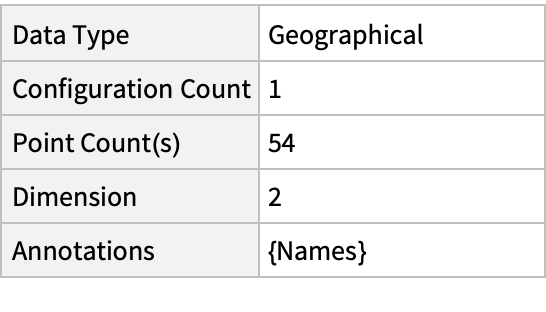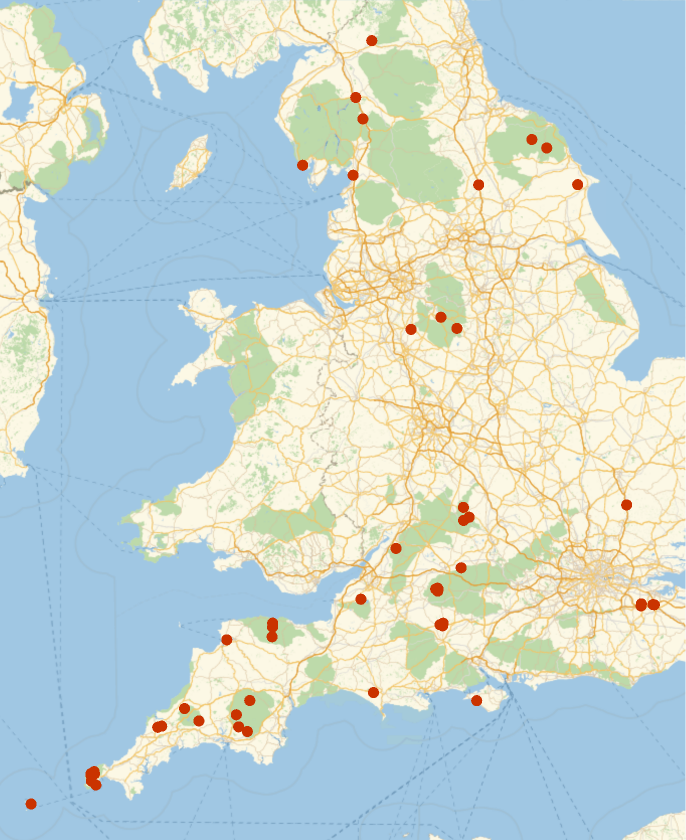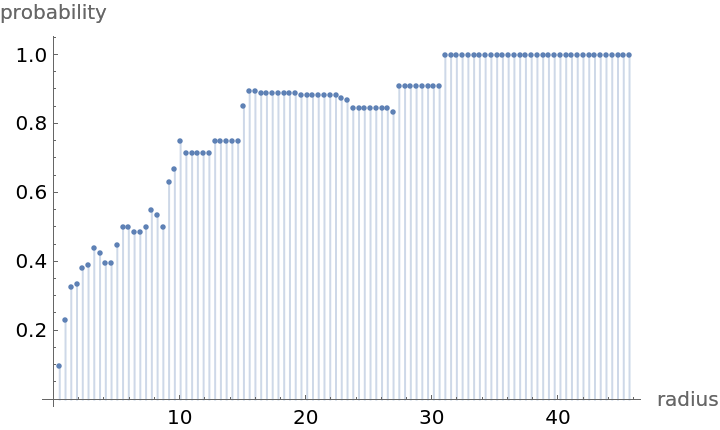Wolfram Data Repository
Immediate Computable Access to Curated Contributed Data
Locations of megalithic monuments in England
| In[1]:= |
| Out[1]= |  |
Summary of the spatial point data:
| In[2]:= |
| Out[2]= |  |
Plot the spatial point data:
| In[3]:= |
| Out[3]= |  |
Compute probability of finding a point within given radius of an existing point - NearestNeighborG is the CDF of the nearest neighbor distribution:
| In[4]:= |
| Out[4]= |  |
| In[5]:= |
| Out[5]= |
| In[6]:= |
| Out[7]= |  |
Mean distance between a typical point and its nearest neighbor (for positive support distribution can be approximated via a Riemann sum of 1-CDF):
| In[8]:= | ![step = maxR/100;
partition = Table[{k, k + step}, {k, 0, maxR, step}];
values = nnG[Mean /@ partition];](https://www.wolframcloud.com/obj/resourcesystem/images/d2c/d2cf0b23-4282-4f78-b676-12deacd6420c/5f42b7506f2348e2.png) |
| In[9]:= |
| Out[9]= |
Gosia Konwerska, "Sample Data: England Megalithic Monuments" from the Wolfram Data Repository (2021)